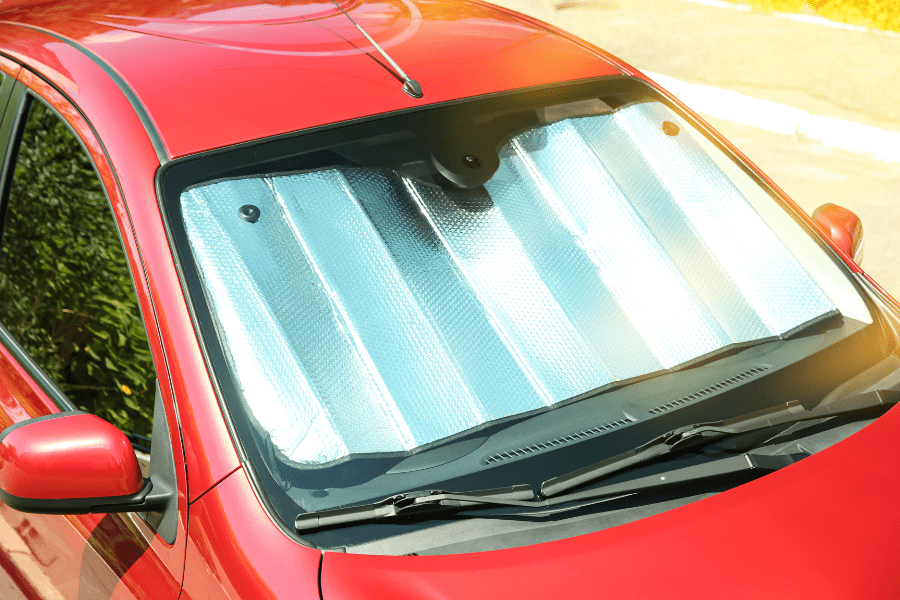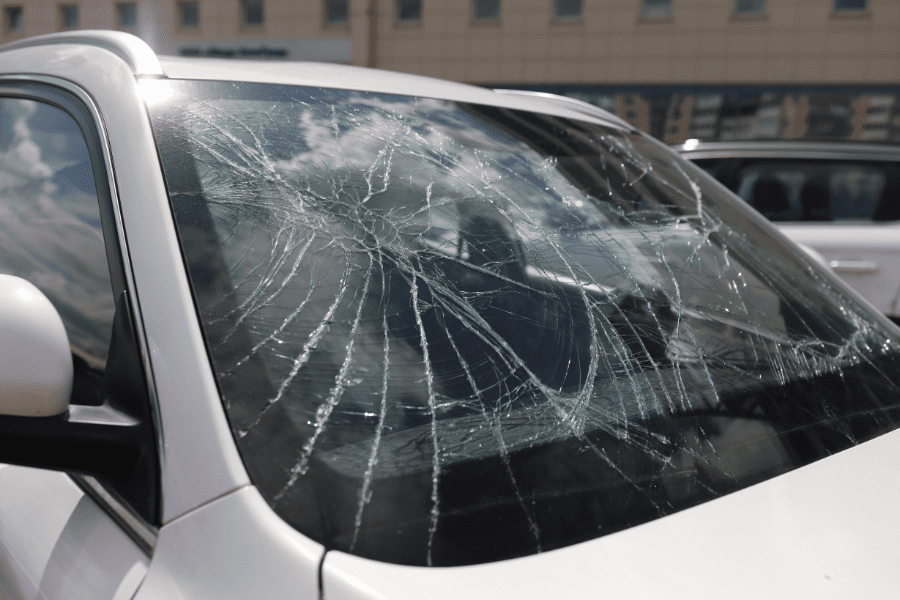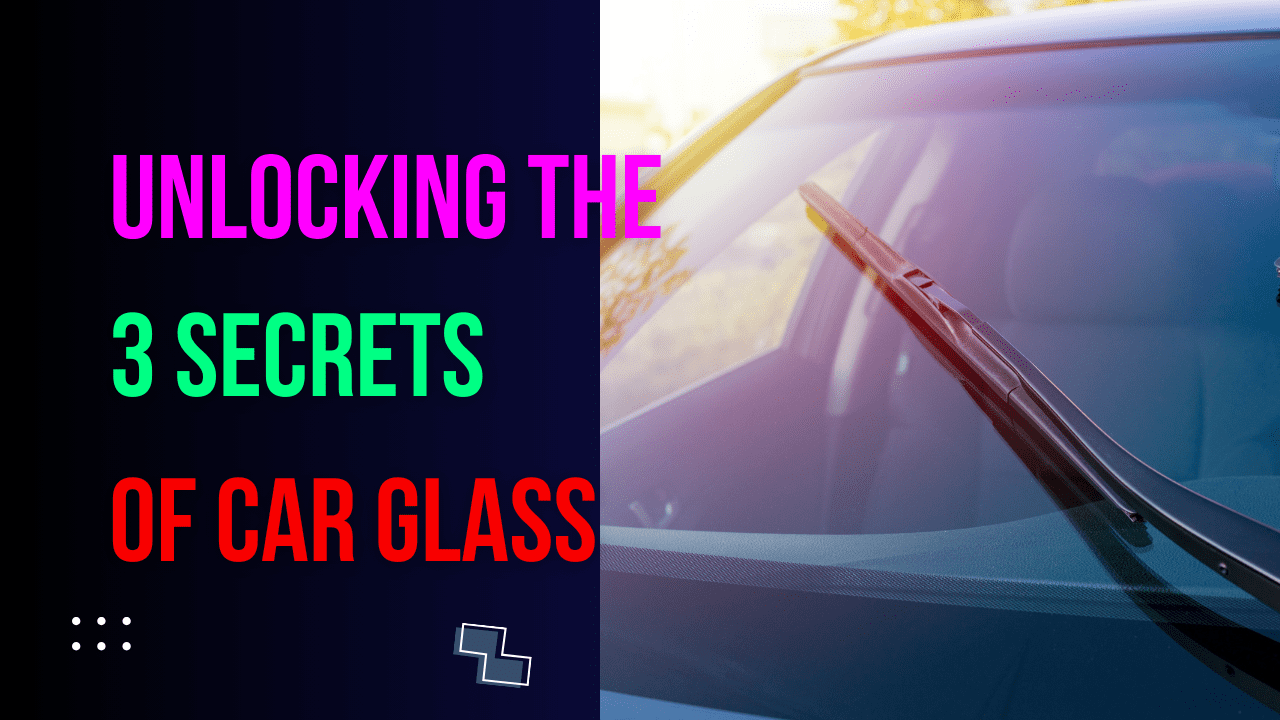Table of Contents
Intro

Have you ever looked closely at the car glass? As we admire the sleek lines and elegant design of modern automobiles, our eyes are often drawn to the shiny surfaces and refined curves. Among these features, automotive glass stands out not only for its clarity and shine, but also for a subtle, often overlooked detail-the mysterious black circle pattern that surrounds its edges, known as “frit”. Far from a mere aesthetic touch, this pattern holds secrets to the car’s functionality, safety, and overall design integrity.
More than just a decorative feature, the frit is a testament to the intricate blend of aesthetics and engineering that goes into every aspect of automotive design. It plays critical roles-from protecting the adhesive that holds the glass in place to ensuring the glass’s durability against the elements. This article aims to unlock the secrets of automotive glass frit, exploring its purpose, functionality and the sheer ingenuity behind this essential automotive component.
Join us as we delve into the world of auto glass and discover how a simple pattern contributes significantly to our driving safety and vehicle longevity. Understanding these details not only enhances our appreciation of automotive technology, but also invites us to explore the subtle beauty and complexity that lies within the everyday objects that surround us.
What is frit on Car glass?
At first glance, frit on car glass may seem like a simple aesthetic detail – a border that adds a sleek finish to a vehicle’s windows. However, this patterned band, typically found along the edges of car glass, is a key player in both the function and longevity of the window. To truly appreciate its role, we must first understand what frit is and the science behind its inclusion in automotive design.
Definition and Visual Description
Frit is a ceramic paint that is applied to car glass and then baked into the surface, creating a permanently bonded, opaque edge. It is easily recognizable as a black dotted pattern that blends into the clear glass of the window. This pattern is not uniform; it often starts dense at the edge and gradually fades into smaller dots that blend seamlessly into the transparency of the glass. The primary purpose of this gradient, or dot matrix, is to provide a smooth aesthetic transition between the glass and the vehicle body. But the role of the frit goes far beyond appearance.
Historical evolution
The use of frit on car glass dates back several decades, and originated as a solution to technical challenges in automotive design. Early automobiles did not have the tight, seamless glass-to-body fit of modern vehicles. As automotive design evolved, the need for a method of concealing the adhesive used to bond the glass to the frame became apparent. Enter the frit, which not only masked the adhesive, but also added several unanticipated benefits to the structural and functional integrity of the vehicle.
Initially, frit was purely utilitarian, applied as a solid black band. However, as cars became more than just a means of transportation, but also a statement of design, the aesthetic aspect of frit began to receive more attention. Designers began experimenting with patterns and densities, leading to the sophisticated dot gradients seen today.
The evolution of the frit reflects broader trends in automotive design, where each element serves multiple purposes – functional, safety and aesthetic. Understanding the role of the frit is essential for anyone interested in the nuances of automotive engineering and design. It is a testament to how automakers pay attention to every detail, no matter how small, to enhance the driving experience, safety, and longevity of the vehicle.
The Aesthetic Appeal of Frit
While the functional benefits of frit on car glass are undeniably critical, its contribution to a vehicle’s aesthetic appeal cannot be overlooked. This subtle yet significant design element harmonizes form with function, blending seamlessly into the overall appearance of the vehicle while performing its critical functions. The aesthetic appeal of frit lies in its ability to provide a sleek, finished look to the exterior of the vehicle, while adding a touch of sophistication to the transition between the vehicle body and the glass.
Enhance vehicle design
The frit frames the car glass, creating a visual boundary that accentuates the lines and curves of the vehicle. This framing effect enhances the design of the vehicle by drawing attention to the glass areas, such as the windshield and windows, and integrating them more cohesively into the body of the vehicle. The result is a smoother, more polished appearance that appeals to the modern consumer’s eye for detail and design.
nological innovation with aesthetic enhancement, making the frit a marker of modern automotive achievement.
Protect the adhesive: The Invisible Shield

One of the most important functions of the frit, often invisible to the casual observer, is its critical role in protecting the adhesive that bonds the glass to the vehicle frame. This section examines how the frit acts as an invisible shield to ensure the integrity and longevity of this adhesive bond, a key element in vehicle construction and safety.
The Role of Adhesive in Car Glass Installation
The adhesive used in auto glass installation is not just any adhesive; it’s a specially formulated compound designed to withstand extreme conditions, including heavy impact, temperature fluctuations and long-term exposure to sunlight. This adhesive ensures that the glass remains firmly attached to the vehicle body, contributing significantly to the structural integrity of the vehicle and the safety of its occupants.
UV Protection: Protecting against the sun’s harmful rays
One of the most important functions of the frit is to protect the adhesive from prolonged exposure to ultraviolet (UV) rays. UV rays can degrade many materials over time, including the adhesives used to install car glass. By absorbing and blocking these harmful rays, the frit prevents weakening of the adhesive bond, which could lead to glass separation or reduced effectiveness in the event of an accident.
The frit as an invisible shield
The frit’s dark pigment is not just for show; it contains ceramic or metallic elements capable of effectively absorbing UV rays. This protective barrier maximizes the life of the adhesive, ensuring that the glass remains securely bonded to the vehicle frame for the life of the vehicle. In addition, by hiding the adhesive, the frit provides a smooth and uninterrupted transition between the glass and the body, enhancing the overall aesthetics of the vehicle.
Heat Dissipation: An Engineering Marvel

In the realm of automotive design, the frit on Car glass is not only a visual and protective feature, but also an engineering marvel, particularly in its role in heat dissipation. This section explores how the seemingly simple black circle pattern contributes to the vehicle’s thermal management, an aspect critical to both the integrity of the glass and the comfort of the occupants.
The Science Behind Heat Dissipation
The principle behind the frit’s heat dissipation function is rooted in basic physics – black objects absorb heat more effectively than objects of any other color. When sunlight hits a car’s windshield, the frit absorbs a significant portion of that heat, preventing it from concentrating solely at the edges where the glass meets the metal frame. This absorption and subsequent distribution of heat is critical to avoid thermal stress that could lead to glass deformation or breakage.
Uniform Heat Distribution for Glass Integrity
The frit acts as a thermal barrier that ensures even distribution of heat across the glass surface. Without this uniform distribution, the glass could expand unevenly in hot conditions, leading to stress fractures or, over time, a complete loss of glass integrity. By mitigating these risks, frit contributes significantly to the longevity and durability of car glass, ensuring that it remains intact and reliable in a variety of environmental conditions.
Improving passenger comfort
Beyond the technical benefits to the glass itself, the heat dissipation function of the frit also enhances passenger comfort. By absorbing and dissipating heat, the frit helps to moderate the temperature inside the vehicle, providing a more comfortable driving experience in sunny conditions. This is particularly beneficial in reducing the greenhouse effect that can occur in parked cars, helping to maintain a cooler interior when the vehicle is exposed to direct sunlight.
An Integral Part of Automotive Thermal Management
The frit’s role in heat dissipation exemplifies the intricate balance of form and function in automotive design. This engineering marvel not only ensures the structural integrity and longevity of car glass, but also contributes to the thermal management of the vehicle as a whole. It is a testament to the thoughtful engineering that goes into every detail of a car, no matter how small it may seem, and highlights the complexity and innovation inherent in automotive design.
Safety First: Improving Car Glass Adhesion

In automotive design, safety is paramount and guides the innovation and implementation of every feature. Among these, glass adhesion to the body stands out as a critical element that ensures the integrity and durability of the vehicle. Frit, with its inconspicuous appearance, plays a key role in enhancing this adhesion, thus contributing significantly to the overall safety of the vehicle.
The Importance of Car Glass Bonding
Glass adhesion to the body is not just about holding the glass in place; it’s an integral part of the vehicle’s structural stability and occupant protection. In the event of a collision, well-adhered glass can contribute to the rigidity of the vehicle, helping to maintain the shape of the cabin and protect passengers from being ejected. Adhesion also affects the effectiveness of airbags, which rely on the resistance of the windshield to deploy properly.
How frit improves adhesion
The frit plays a critical role in improving the bond between the glass and the vehicle frame. Its rough, porous surface provides an ideal substrate for adhesives, allowing for a stronger and more durable bond than could be achieved on smooth glass alone. This increased surface area for adhesion not only improves the strength of the bond, but also its longevity, ensuring that the glass remains firmly in place over time, even under harsh conditions.
The Role of Frit in Safety Features
Beyond its contribution to adhesion, the design of the frit incorporates safety considerations. The gradient of dots around the edges of the frit is not only aesthetically pleasing; it also helps distribute stress along the glass edge during impact, reducing the likelihood of breakage. This thoughtful engineering minimizes the risk of sharp glass shards in an accident, further protecting occupants.
Conclusion
Throughout this exploration of the frit—the enigmatic black circle pattern on car glass—we’ve uncovered the layers of complexity and purpose behind what might initially appear as a simple design feature. Far from being merely decorative, the frit embodies the harmonious integration of aesthetics, safety, and engineering innovation in automotive design. It serves multiple vital functions, from protecting the adhesive that secures the glass to the car body, to ensuring the durability and integrity of the glass through UV protection and heat dissipation. Moreover, its role in enhancing glass adhesion underscores the paramount importance of safety in vehicle design.
Discover More
If this article made you happy and taught you something, I’m sure our next article will do the same for you. Each piece is carefully written to help you understand things better and enjoy reading more. So, to keep exploring and having fun, just click on this link to go to our next story.
The Helium Shortage : A Precious Gas Facing a Global Shortage – ReViewMaster DEN (rvmden.com)
The Evolution of 21st Century Uranium Use – ReViewMaster DEN (rvmden.com)



